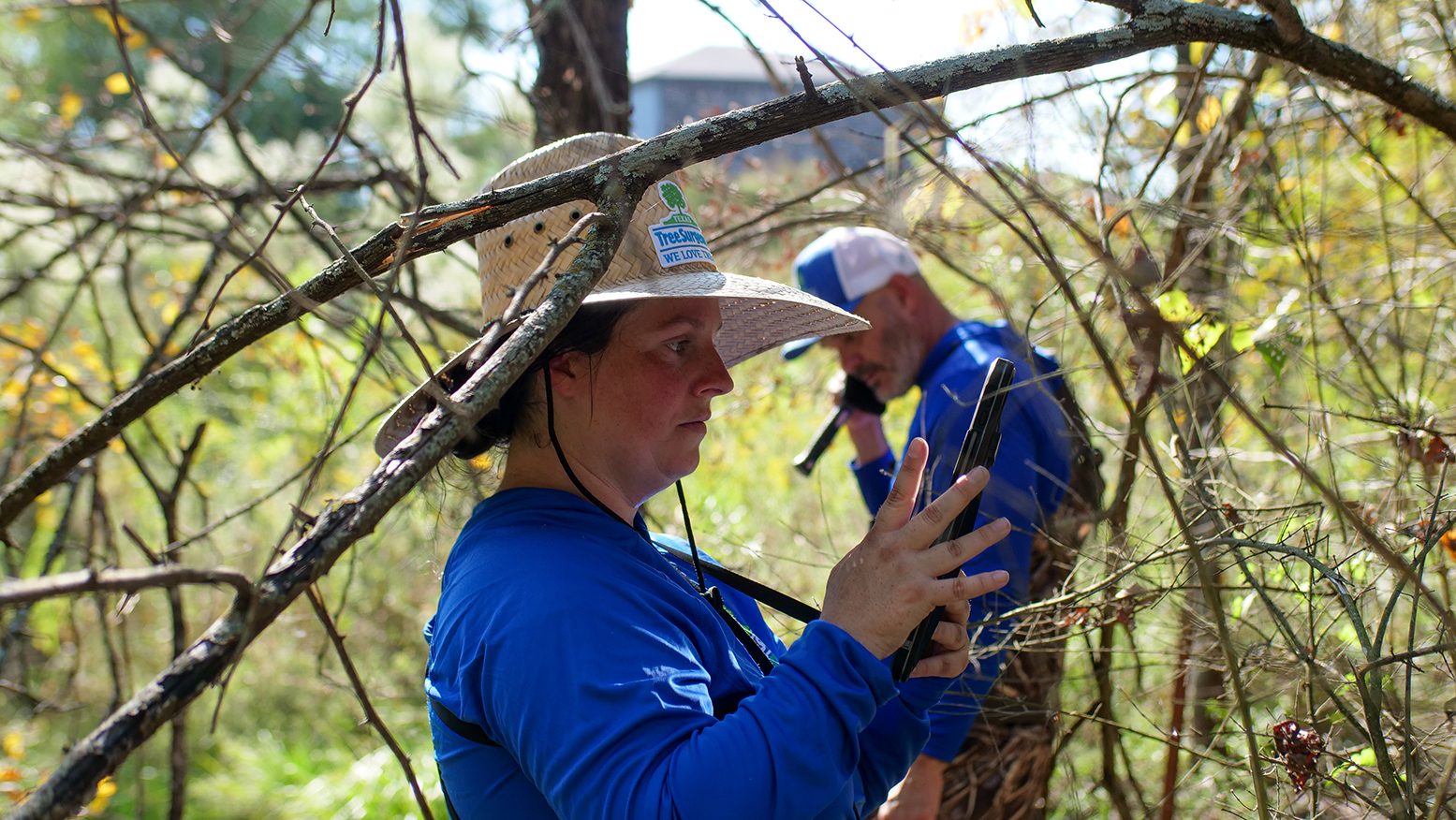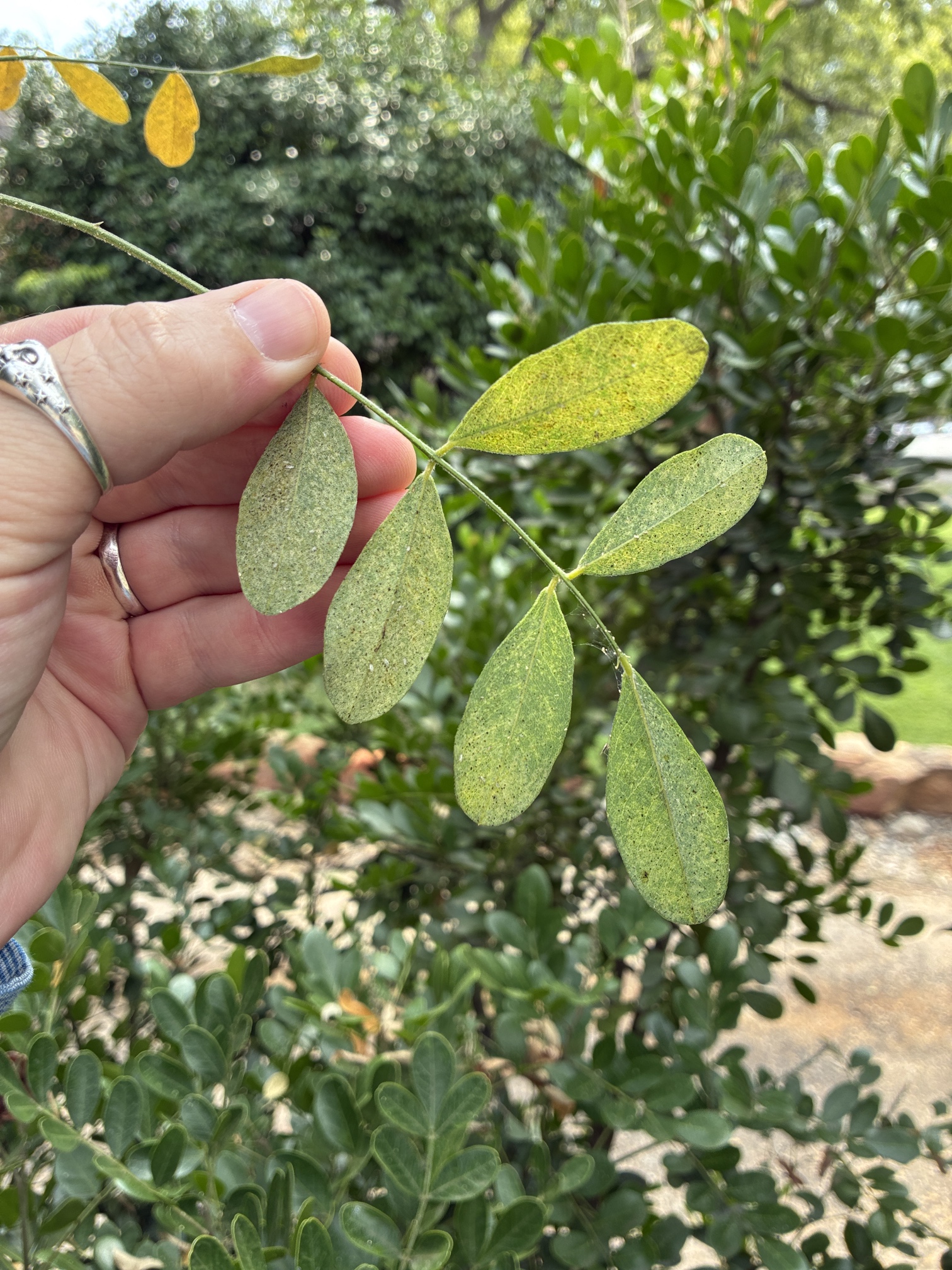The Best Way to Protect Your Trees From Freeze-Damage

Weather in Texas is a bit unpredictable, to the point we can predict it will be unpredictable.
With 2021 winter storm and freeze have made everyone more aware and concerned about how to protect trees from freeze and the stress of extreme weather.
What can you do to help protect your trees from freeze damage?
We say this a lot but the best way to protect your trees from the effects of freeze is to water and use mulch. In addition, do not over-prune your trees.
Sounds so simple yet it often gets overlooked.
During winter people tend to think we do not need to water our trees because it is no longer hot. This isn’t true. Yes, it is cooler but your trees still need water. We are still in a drought.
If you need tips on how to water your tree you can find our video here: How to Water a Tree During a Drought
Mulch is always beneficial as long as it is done right. For best practices, you can find our blog here: How to Use Mulch
Why is watering and mulch so important?
Watering helps insulate the tree from freeze damage, I know it may sound counterintuitive but think of it this way. During a freeze, it is recommended to leave your faucets running to ensure they don’t freeze and burst. Same idea, it keeps the tree’s living system running and will help regulate your tree.
- Drought-stressed plants are more at risk to cold damage.
- Watering a couple of days prior to a freeze is beneficial for optimal plant uptake and utilization prior to a large drop in temperature.
- Helps insulate both the tree and the soil. Out of the entire tree, roots are more susceptible to freezing if not adequately insulated by moist soil and mulch.
Mulch helps insulate the roots and provide additional nutrients. This makes a difference for urban trees because they are often in competition for resources with turf grass or surrounded by concrete. Trees in a forest are insulated by fallen leaves and tiny plants that serve as ground cover. Whatever we can do to help mimic what is found in a forest will always help the health of a tree.
- This is especially helpful for young trees. Mulch helps retain moisture to insulate as well as protect from soil cracking that could encourage root dehydration.
Why is over-pruning your tree so harmful?
- You are taking away its food source and essentially starving your tree. They have fewer leaves to help produce energy and will suffer more stress during harsh weather conditions.
- Without the extra foliage, you are exposing the tree. Think of the internal branches as a sweater and the saying; there is no bad weather, but bad clothes. The leaves help regulate temperature in the interior canopy.
- When there are leaves only on the tip of a branch and not down its entire length they are at higher risk of breaking due to wind. This is because it disrupts the load distribution of the branch. Evergreens are especially at risk of breaking due to ice if over-pruned.
Additional information about sudden temperature change:
- Temperature change is the least controllable environmental factor in landscapes.
- Trees are more susceptible to injury if the temperature drops quickly rather than slowly over several days.
- Trees can be injured or killed by low temperatures almost any season of the year, but the most critical periods are:
- Quick extreme temperature fluctuations
- The coldest portion of winter
- When minimum temperature occur after a warm winter period even though plants had been at a maximum hardiness earlier (this is typical North Texas weather).
- Avoid high nitrogen fertilization.
The best way to protect your tree from freeze damage is to water regularly, apply mulch, and do not over-prune.
If you have questions about what to do post-freeze damage please read our previous blogs:
- Storm Tips
- Signs of Freeze
- What to do if Your Tree Hasn’t Recovered From Freeze-Damage
- What to do with Freeze-Damaged Ash and Elm Trees
- How to Help Oak and Elm Trees from Freeze-Damage
- Can Palm Trees Survive Freezing Weather?
- Can Live Oaks Survive Freezing Weather?
- How to Help Your Trees Recover from Freezing Weather
At Texas Tree Surgeons, we love trees and we love our customers, and we believe that the more people learn about their trees, the better we can serve our community. We hope this article has helped answer your questions about protecting trees from freeze damage. If you have any specific questions, let us know, and we’ll be happy to send an arborist out to evaluate your needs and offer our suggestions and expertise.
Related Blogs
Similar blogs related to this topic


Avoid These Tree Care Mistakes for a Healthy Landscape
Below is a list of overlooked mistakes that could jeopardize the health of your trees. From missteps in pruning to incorrect watering practices, discover how to give your trees the care they deserve. Red oak…
Read more

Why do Arborists Recommend Soil Sampling in Urban Areas like Dallas?
Soil sampling is a crucial practice in urban areas like Dallas. It helps arborists make informed decisions about your landscape to ensure a healthy urban ecosystem. Our native soils vary widely—from the dense clays of…
Read more

Spider Mites
Spider mites may be small, but they can have a huge effect on the health of trees. These tiny arachnid pests are common on urban trees in North Texas, affecting both evergreens (like cedar and…
Read more
